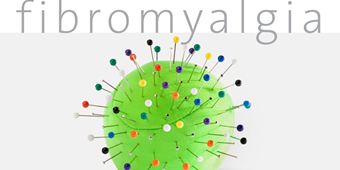Digesting the Facts On Esophageal Cancer

Answer a few questions and we'll provide you with a list of primary care providers that best fit your needs.
Every time we indulge in the simple pleasures of eating and drinking, our esophagus, an 8-inch muscular tube, plays a critical role in transporting food from our throats down to our stomachs for digestion.
Cancer of the esophagus occurs when cancer cells begin to grow within the lining of the esophagus. If left unchecked, they spread into the tube’s deeper layers, nearby lymph nodes, and other organs, such as the liver or lungs. Esophageal cancer is responsible for only 1 percent of all new cancers in the U.S., according to the National Cancer Institute, but it can be difficult to treat.
If the cancer is discovered when it’s still contained in the esophagus, five-year survival rates for esophageal cancer can be quite good – about 60 to 95 percent of people will live beyond five years.
“Unfortunately, about 73 percent of these cancers are diagnosed when the cancer either has spread to the lymph nodes or to other organs,” says surgical oncologist Matthew Doepker, MD. If you have esophageal cancer found at these later stages, chances of survival at five years drops below 30 percent and 5 percent if the cancer has spread to the lymph nodes or distant organs, respectively.
Two Types Of Esophageal Cancer
Dr. Doepker explains that there are two types of cancer that appear in the esophagus:
- Adenocarcinoma. This type is more common in the U.S., especially in Caucasian men and people who are obese. About 97 percent of this type of esophageal cancer occurs in the middle or end of the esophagus, where it joins with the stomach. Adenocarcinoma may occur from the abnormal cells of untreated Barrett esophagus.
- Squamous cell carcinoma. This cell type occurs in the upper, middle, and lower esophagus and is more common in people living in other parts of the world. It is five times more common in African Americans than Caucasians in the U.S. Smoking and excessive alcohol, especially in combination, are major contributors to this type of esophageal cancer.
Barriers to early detection of the cancer are lack of a practical screening test and lack of symptoms in most early-stage esophageal cancers.
Symptoms
When symptoms do show up, they can be similar to symptoms of many other conditions. Dr. Doepker encourages us not to ignore symptoms that don’t go away.
“If you think anything is out of the ordinary, don’t be afraid to call your physician,” he says. Any of the following symptoms should be evaluated, especially if they persist:
- Trouble with swallowing bulky foods, which progresses to trouble with swallowing liquids
- Indigestion, heartburn, or pressure in your chest
- Unexplained weight loss
- Vomiting, coughing, or hoarseness, which may be signs of advanced esophageal cancer
Risk Factors For Esophageal Cancer
Factors that contribute to a higher risk of esophageal cancer include both things you can control and those you can’t.
Dr. Doepker advises staying away from tobacco in any form and avoiding heavy alcohol use. Both raise your risk of getting this cancer. Combined, they increase your risk of esophageal cancer 44 times.
Obesity and a diet low in fruits and vegetables are other contributing factors whose impact can be decreased by eating more fruits and vegetables and maintaining a healthy weight.
Other risk factors include:
- Age. People 45 to 70 have the highest risk
- Gender. Men are three to four times more likely than women to get this cancer
- Obesity.
- Diet/nutrition. A diet high in saturated fats and low in fruits and vegetables increase a patient’s risk
- Barrett’s esophagus. If you have damaged esophageal tissue from chronic gastroesophageal reflux disease (GERD), the tissue can turn into glandular tissue that has a risk of turning into esophageal cancer if untreated
- Achalasia. This condition occurs when the lower muscular ring of the esophagus doesn’t relax when you are swallowing food. The food may back up into your esophagus and damage tissue in the esophagus
Researchers are exploring whether human papillomavirus (HPV) is a risk factor, but evidence is not yet conclusive.
Diagnosis
If your physician suspects you may have esophageal cancer, one of two tests is likely to be performed while you are sedated:
- Upper gastrointestinal endoscopy, also called an EGD (esophagogastroduodenoscopy). The EGD uses a thin, lighted tube called an endoscope, which the physician places down your throat to obtain a biopsy (tissue sample) to test for cancerous cells.
- Endoscopic ultrasound (EUS). EUS can be performed at the same time as an EGD or by itself, using ultrasound to determine if the tumor has grown into the wall of the esophagus. It also helps determine how deeply the tumor has grown and whether there is cancer in the lymph nodes or areas near the esophagus. A fine needle can be used to remove tissue samples to test for cancer cells.
A CT scan of the chest, abdomen, and pelvis can help determine a tumor’s size, and a positron emission tomography (PET) scan can provide additional images and information about the extent of cancer spread to other organs.
Dr. Doepker says the quality of imaging techniques over the past 20 years has improved greatly, helping physicians to detect cancers sooner and more precisely.
Treatment
If you have esophageal cancer, treatment options continue to advance, ranging from surgery to radiation therapy to chemotherapy, targeted therapy, and immunotherapy.
Because many approaches are possible, Dr. Doepker recommends going to a cancer center that has a multidisciplinary team approach.
“At our center, we have surgical oncologists, radiation oncologists, medical oncologists, nurse navigators, and a social worker all working together,” he says. They take turns being the “quarterback” for a patient’s care, depending on the cancer stage.
“With early-stage cancers, people usually go straight to surgery to remove the cancer. I use a robotic-assisted laparoscopic approach, which means smaller incisions, shorter hospital stays, and better recovery times. I take out part of the esophagus and use part of the stomach or small intestine to create a new tube.” Surgery may be enough to cure the cancer, or sometimes a person receives chemotherapy afterwards to destroy any microscopic (stray) cancer cells.
For locally advanced cancers, which have spread into deeper layers of the esophagus or nearby lymph nodes, the strategy is to shrink the tumor first through chemotherapy or radiation therapy and when it has nearly disappeared, remove the remaining tumor surgically.
If you have metastatic cancer that has spread to other organs, surgery is not a treatment option, Dr. Doepker says. “We may do radiation therapy to shrink the tumor and ease the process of eating and drinking or we may try chemo to slow the progression.”
Immunotherapy is sometimes given to boost the body’s immune system. For metastatic esophageal adenocarcinoma, HER2-targeted therapy may be used to block the growth and spread of cancer cells.
Palliative care measures, also called comfort care, include pain management, supporting the ability to eat as long as possible, and providing alternative sources of nutrition.
When a cure is not possible, doctors work to prolong life and quality of life, according to a patient’s wishes. Dr. Doepker says, “The prognosis is getting better because we’re diagnosing cancers earlier. There are lots of people working in your favor with a good, unified plan.”
Answer a few questions and we'll provide you with a list of primary care providers that best fit your needs.
Source: Matthew P. Doepker, MD, surgical oncologist, Premier Surgical Oncology





